Environmental activists Will Falk, left, and Max Willbert, right, stand in front of the encampment on May 18, 2021. They have helped organize tribal members to oppose the mine. Photo: David Calvert / The Nevada Independent
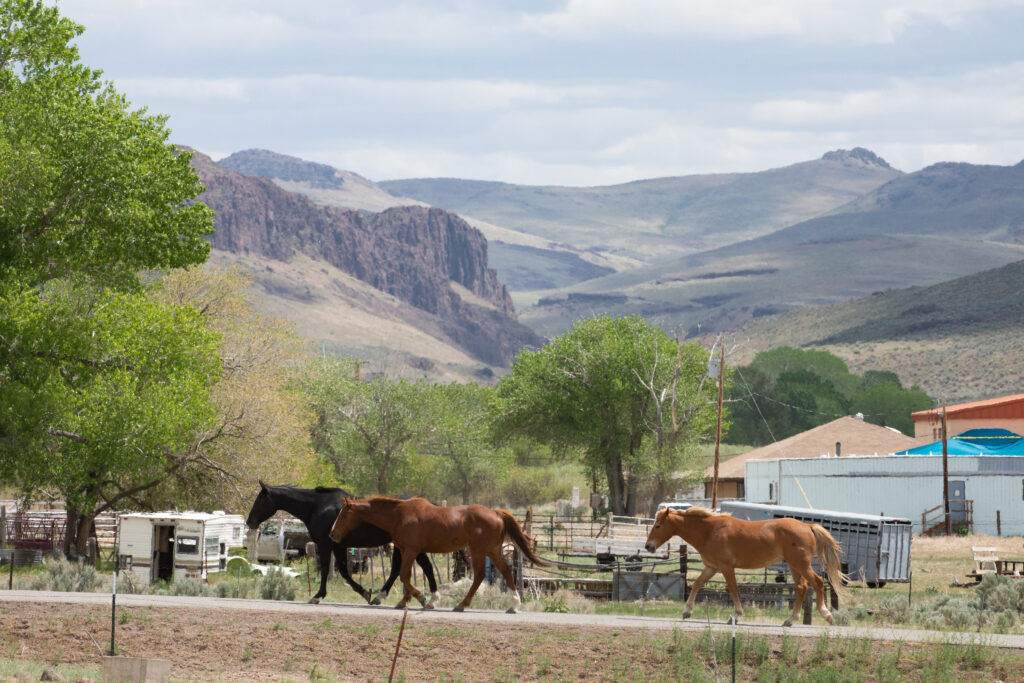 The Fort McDermitt Indian Reservation following a storm in an otherwise dry year on May 19, 2021. The reservation includes land in Nevada and Oregon. Photo: David Calvert
The Fort McDermitt Indian Reservation following a storm in an otherwise dry year on May 19, 2021. The reservation includes land in Nevada and Oregon. Photo: David Calvert
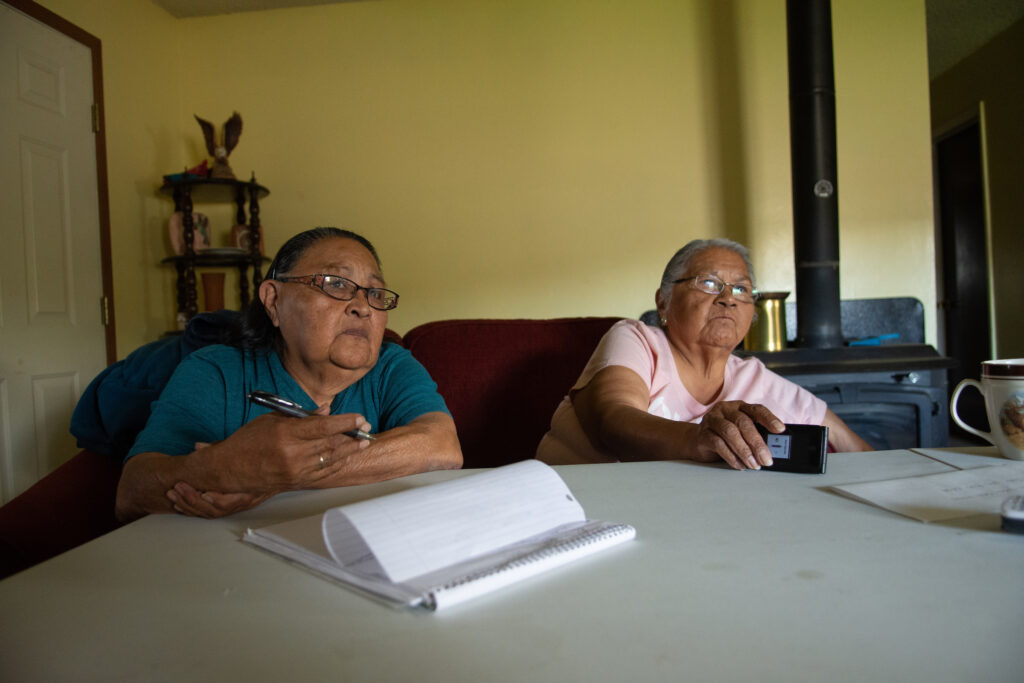 Tribal elders Inelda Sam, left, and Josephine Dick, right, talk about the spiritual significance of Thacker Pass and their opposition to the lithium mine on May 19, 2021. Photo: David Calvert
Tribal elders Inelda Sam, left, and Josephine Dick, right, talk about the spiritual significance of Thacker Pass and their opposition to the lithium mine on May 19, 2021. Photo: David Calvert
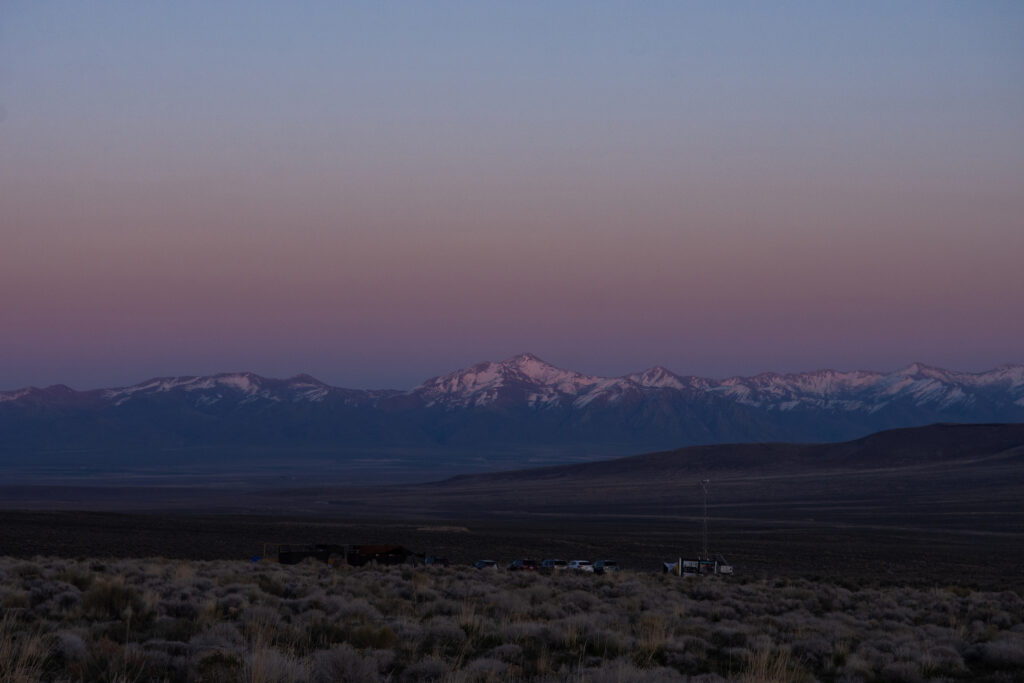 The Protect Thacker Pass encampment at sunset on April 17, 2021. Photo: David Calvert
The Protect Thacker Pass encampment at sunset on April 17, 2021. Photo: David Calvert
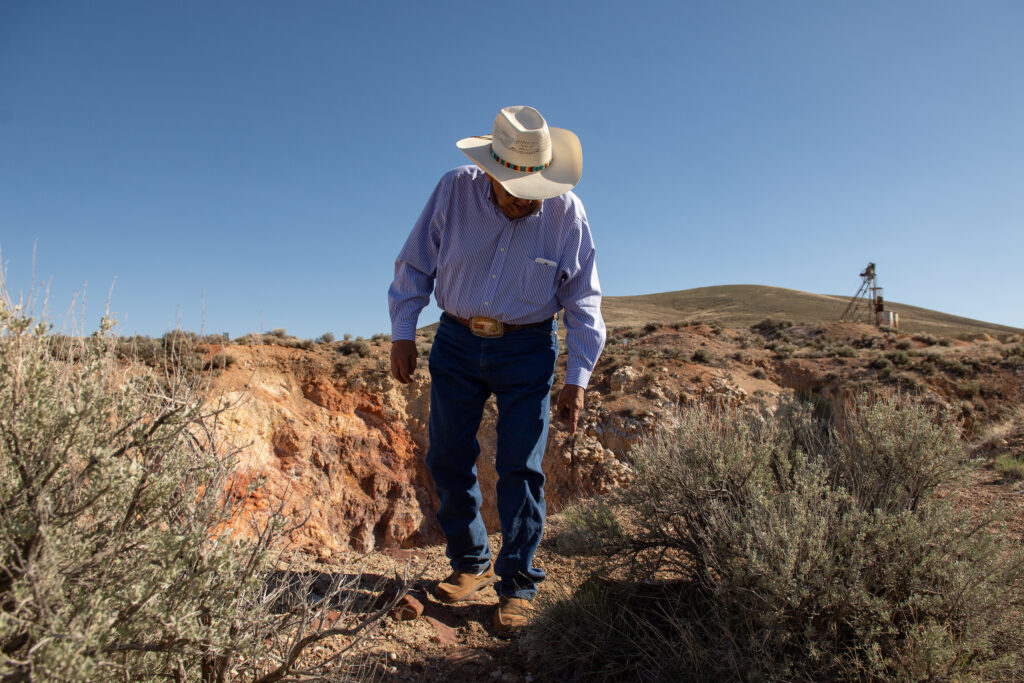 Eddie Smart stands in front of a former mercury mine near the Fort McDermitt Paiute Shoshone Tribe’s reservation on April 17, 2021. Smart is concerned about more mines coming to the area. Photo: David Calvert
Eddie Smart stands in front of a former mercury mine near the Fort McDermitt Paiute Shoshone Tribe’s reservation on April 17, 2021. Smart is concerned about more mines coming to the area. Photo: David Calvert
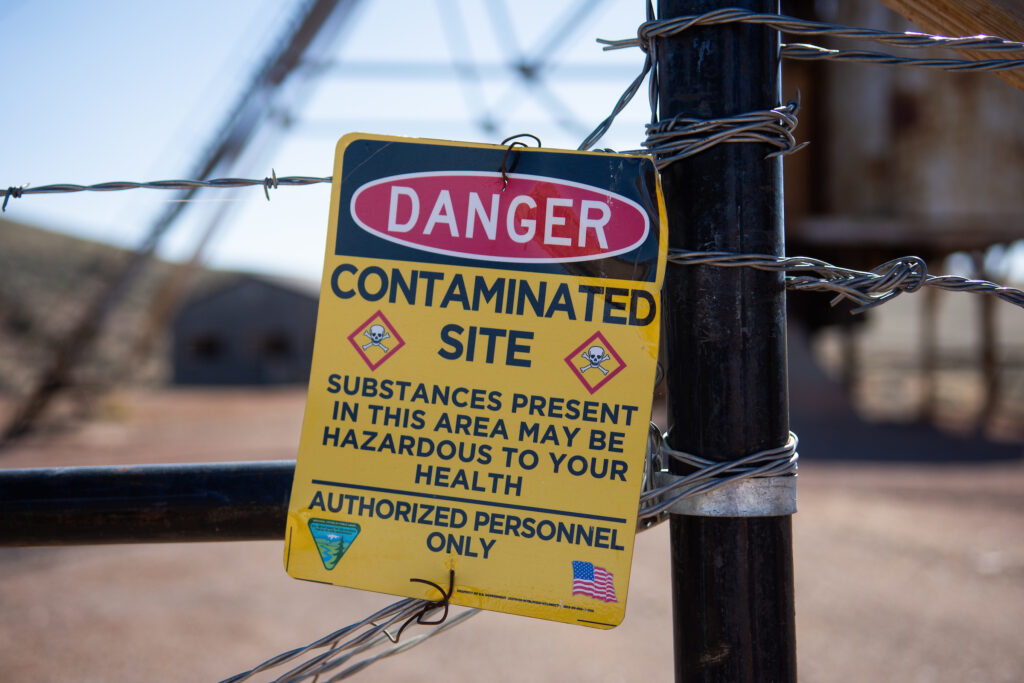 A contamination warning sign in front of the Cordero Mine on April 17, 2021. The mine was built before stricter environmental regulations were put in place. Photo: David Calvert
A contamination warning sign in front of the Cordero Mine on April 17, 2021. The mine was built before stricter environmental regulations were put in place. Photo: David Calvert
 Tim Crowley, the vice president for government and community relations for Lithium Americas’ Nevada division, speaks to a community meeting of concerned citizens in Orovada on April 27, 2021. Photo: David Calvert
Tim Crowley, the vice president for government and community relations for Lithium Americas’ Nevada division, speaks to a community meeting of concerned citizens in Orovada on April 27, 2021. Photo: David Calvert
 A dance after a peaceful protest against Thacker Pass in downtown Reno on June 12, 2021. The demonstration drew more than one-hundred supporters. Photo: Daniel Rothberg
A dance after a peaceful protest against Thacker Pass in downtown Reno on June 12, 2021. The demonstration drew more than one-hundred supporters. Photo: Daniel Rothberg
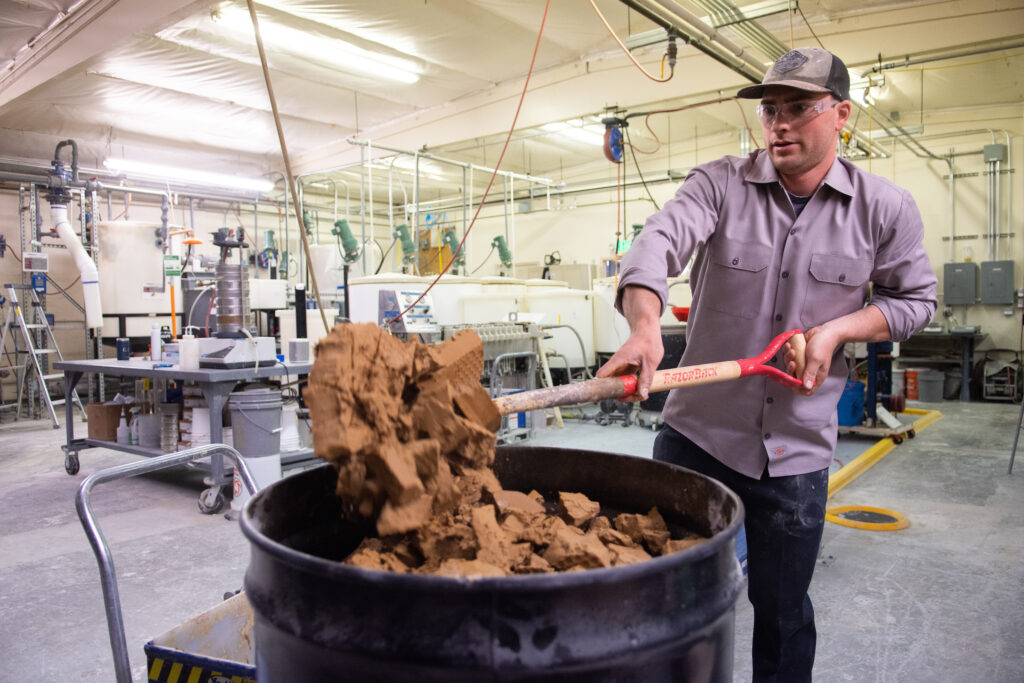 A Lithium Americas pilot plant technician shovels tailings into a bin after they went through a lithium extraction process at the company’s test plant in Reno on May 12, 2021. Photo: David Calvert
A Lithium Americas pilot plant technician shovels tailings into a bin after they went through a lithium extraction process at the company’s test plant in Reno on May 12, 2021. Photo: David Calvert
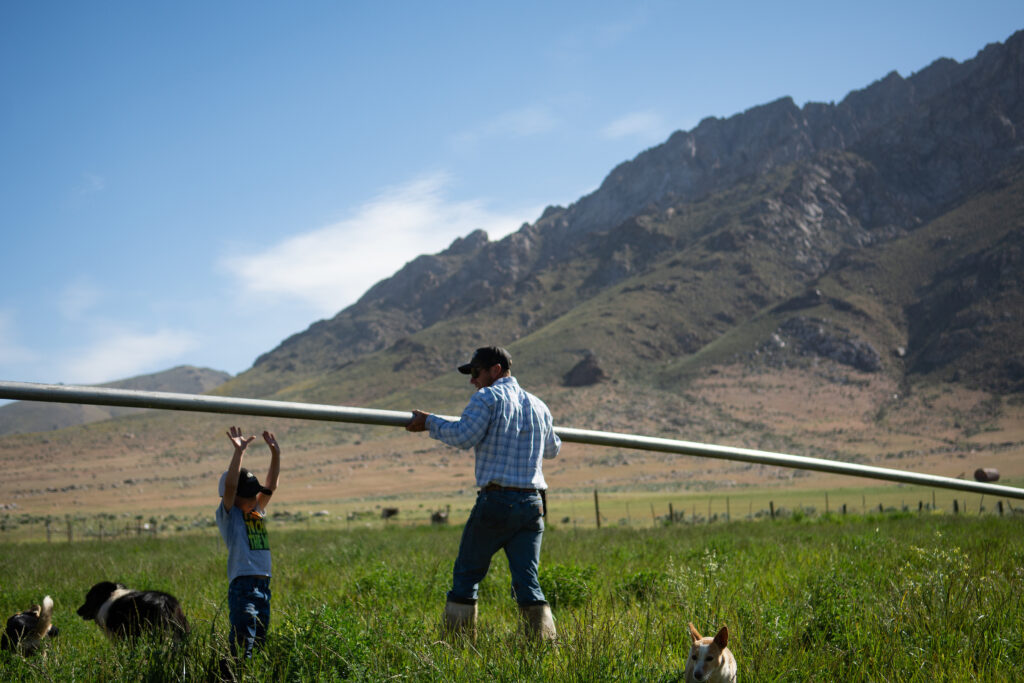 Dusty Edwards moves an irrigation pipe in the morning hours with his son, Rhett, on May 19, 2021. He says this is one of the driest seasons on record. Photo: David Calvert
Dusty Edwards moves an irrigation pipe in the morning hours with his son, Rhett, on May 19, 2021. He says this is one of the driest seasons on record. Photo: David Calvert
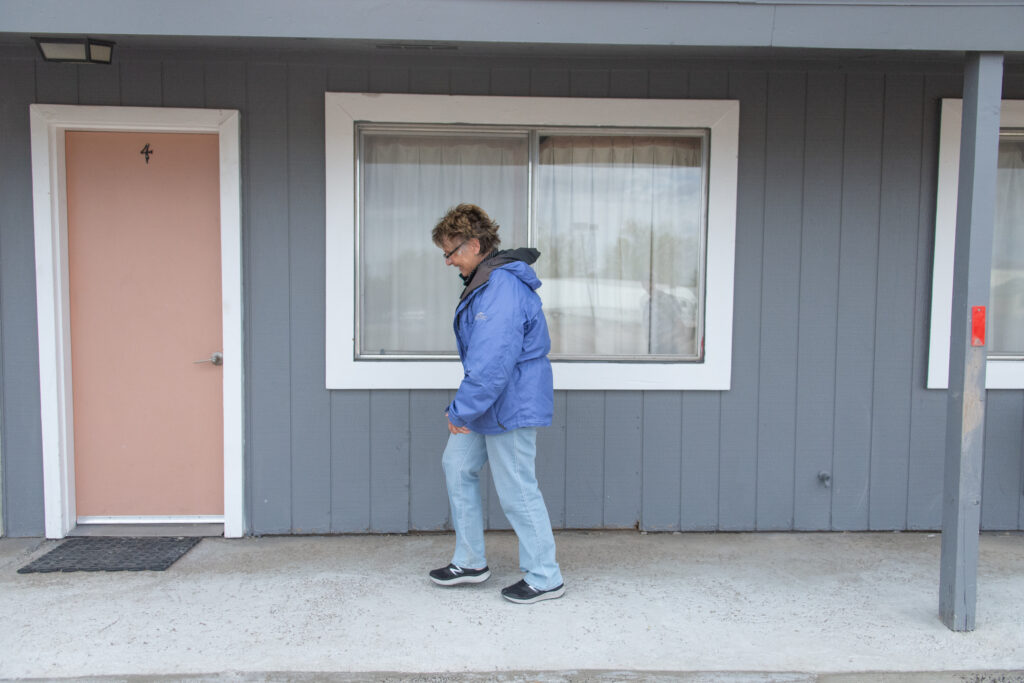 Illyssa Fogel, owner of the Double A Motel in McDermitt on May 19, 2021. Fogel supports the economic opportunities that the mine could bring to the small town. Photo: David Calvert
Illyssa Fogel, owner of the Double A Motel in McDermitt on May 19, 2021. Fogel supports the economic opportunities that the mine could bring to the small town. Photo: David Calvert
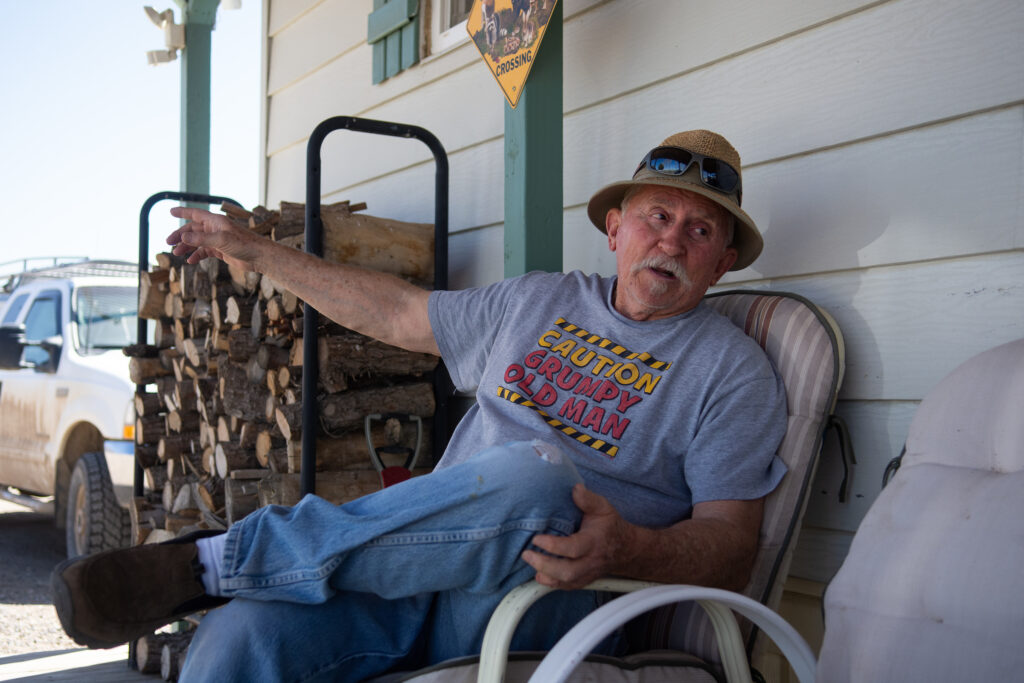 Terry Crawforth, a former director of the Nevada Department of Wildlife, gestures to the base of the Montana Mountains from his home on April 18, 2021. Photo: David Calvert
Terry Crawforth, a former director of the Nevada Department of Wildlife, gestures to the base of the Montana Mountains from his home on April 18, 2021. Photo: David Calvert
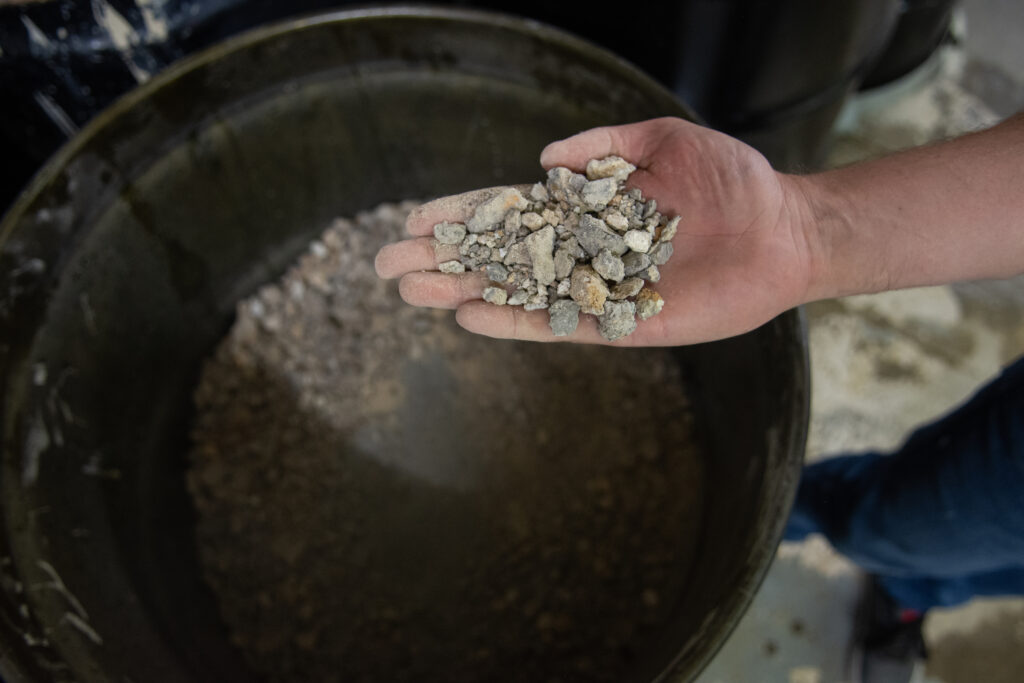 An ore sample from Thacker Pass at Lithium Americas’ process testing facility in Reno on May 12, 2021. Photo: David Calvert
An ore sample from Thacker Pass at Lithium Americas’ process testing facility in Reno on May 12, 2021. Photo: David Calvert
Comments
Use the comment form below to begin a discussion about this content.
Sign in to comment